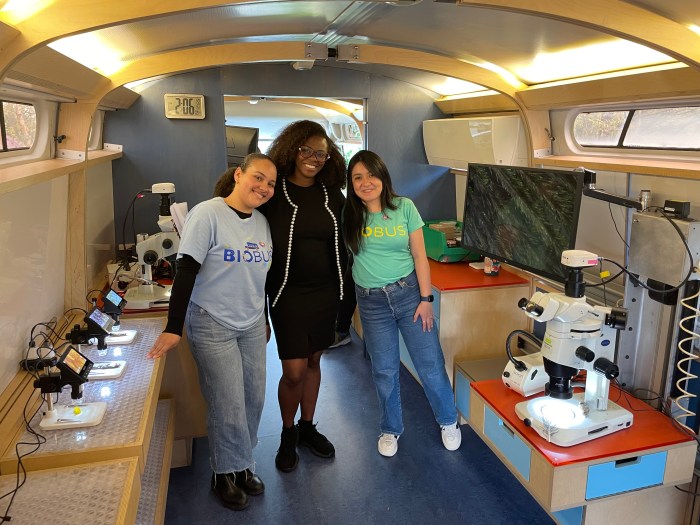New Yorkers have gotten a first glimpse of a 3.5-mile park, larger than Manhattan’s High Line, that would transform Queens if it gets the go-ahead.
The QueensWay project would convert more than three miles of abandoned train tracks — that run from Forest Hills to Ozone Park — into a multipurpose public space.
Friends of the QueensWay, the grassroots group spearheading the project, unveiled the results of a year-long study that showed off some of the park’s potential features and amenities such as a bike path, viewing areas with benches and ecological learning centers.
Supporters say the QueensWay — which needs approval from the city and $120 million in funding — would be a major benefit for the community, but some detractors have other ideas for the land, like a railway to Rockaways.
“A positive use of the space will generate a lot of business and energy to the area, totally,” said Geoffrey Croft, president of the nonprofit NYC park advocates. “It’s a terrific idea.”
The track hasn’t been used in 52 years when the LIRR shut down the Rockaway Beach Branch and since then, the 47 acres have been overrun with vegetation, trash and sometimes squatters.
Travis Terry, a Forest Hills resident who is on the Friends of the QueensWay’s steering committee, said he and his community were inspired by the High Line and wanted to create a safe, open alternative that attracted visitors from around the world.
“The greenway is a great plan to show the cultural diversity of the neighborhood,” he said adding that more than 322,000 people live within a mile of the proposed green space.
Among the proposals in the feasibility study are a multipurpose space, outdoor nature classrooms for nearby schools and a recreational zone.
“We can tell you with the plan, and the partnership with the Friends of the QueensWay, that this will be a world class piece of work,” said Will Rogers, president of the The Trust for Public Land, the national parks group that worked with the Friends of the QueensWay on the study.
Croft said the emphasis on traffic safety and increased park land for New Yorkers are key in getting the approval from Mayor Bill de Blasio, who has been pushing his Vision Zero and park expansion agendas, and the City Council.
“Remember, none of the mayors supported the High Line initially. What got it rolling was tying it the economic development of the West Side.”
Several elected officials including U.S. Rep. Grace Meng, Councilwoman Karen Koslowitz and state Assemb. Andrew Hevesi, all of whom represent Forest Hills, have backed the proposal, but there is also opposition.
State Assembly member Phillip Goldfeder echoed complaints from some of his constituents in the Rockaways that the land should be reopened for trains to go into the peninsula.
“The QueensWay and Trust for Public Land have wasted taxpayer dollars on expensive, out of state consultants and one-sided studies that don’t actually represent the interests or needs of Queens families,” he said in a statement.
The project’s organizers reminded that the city owns the land and not the MTA and several past studies have shown that it was unfeasible to reopen the tracks for train traffic. Croft agreed and said the groundswell and benefits for the train service were much smaller than the park idea.
“This is a unique spot that 99% of the population hasn’t been to,” he said. “It’s a very promising project.”

















